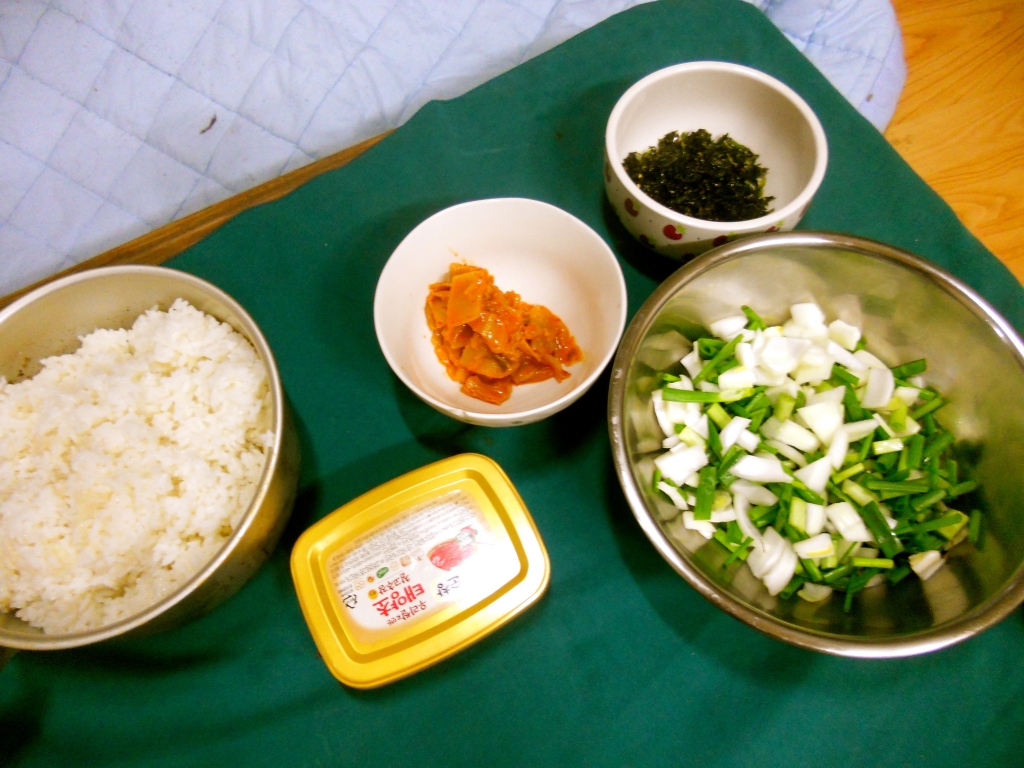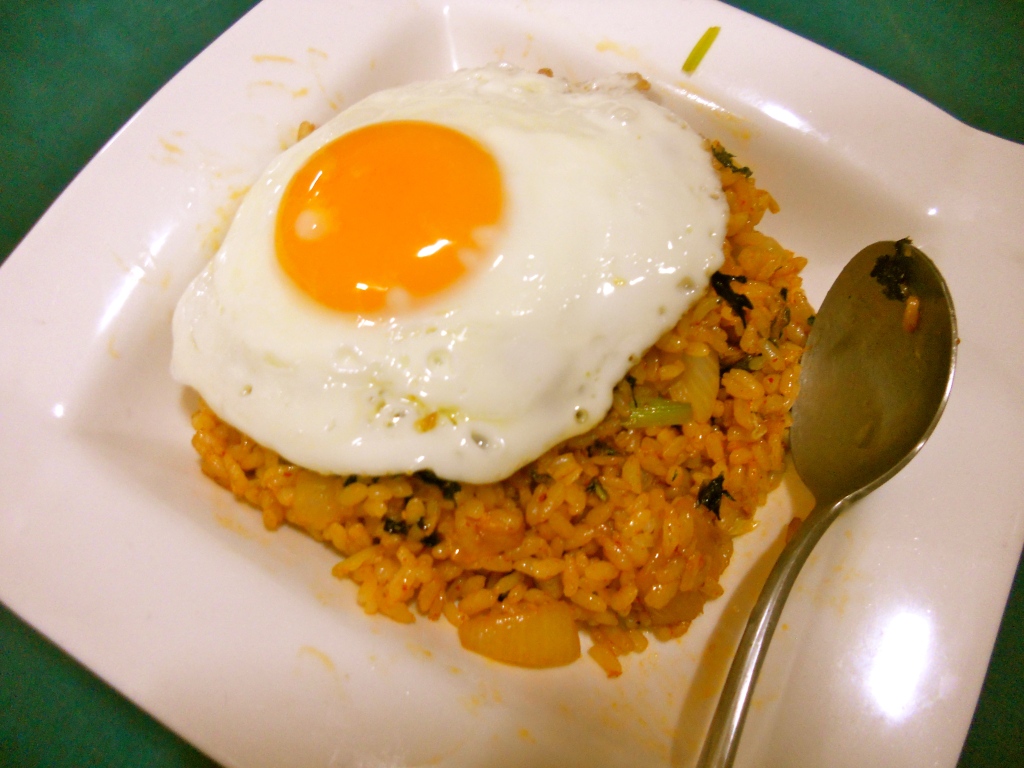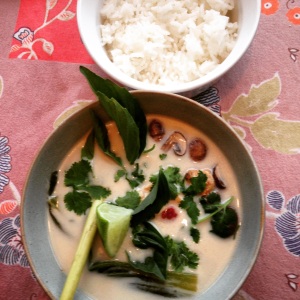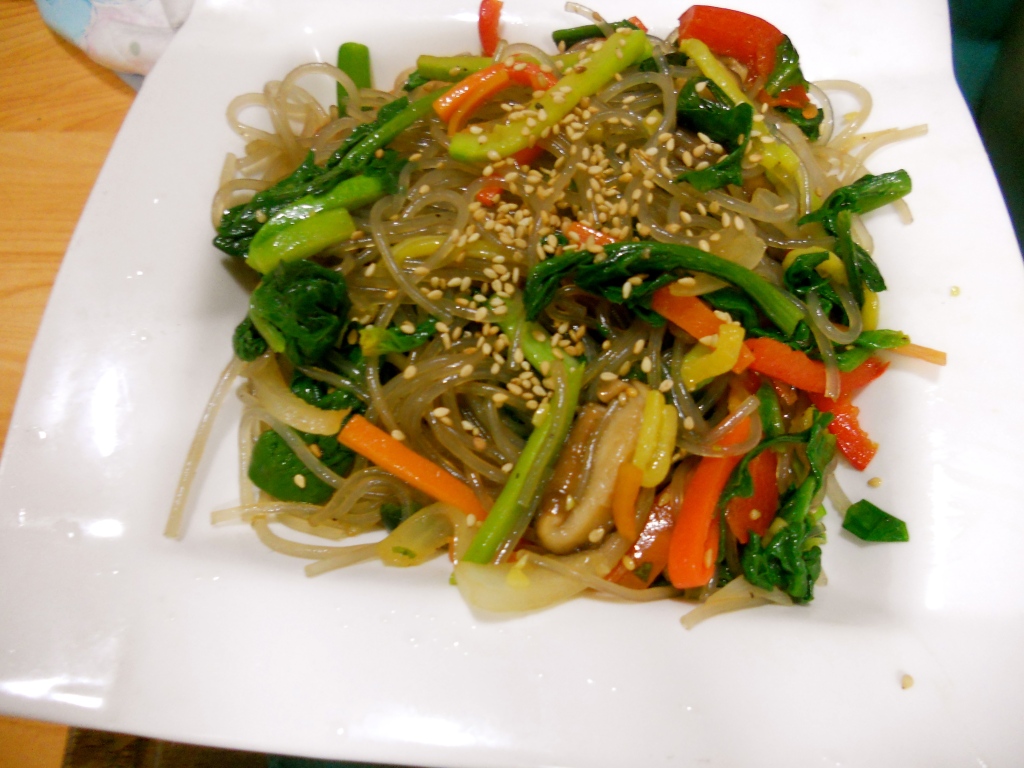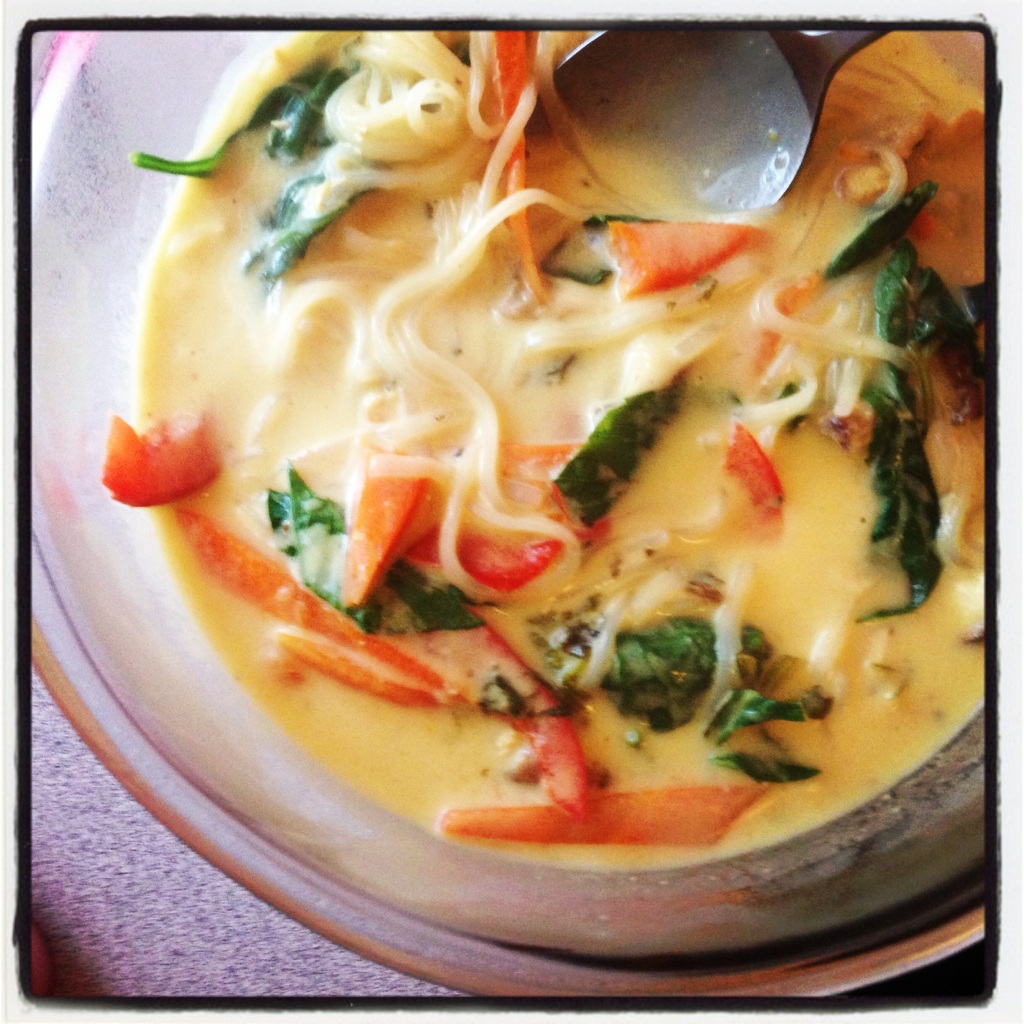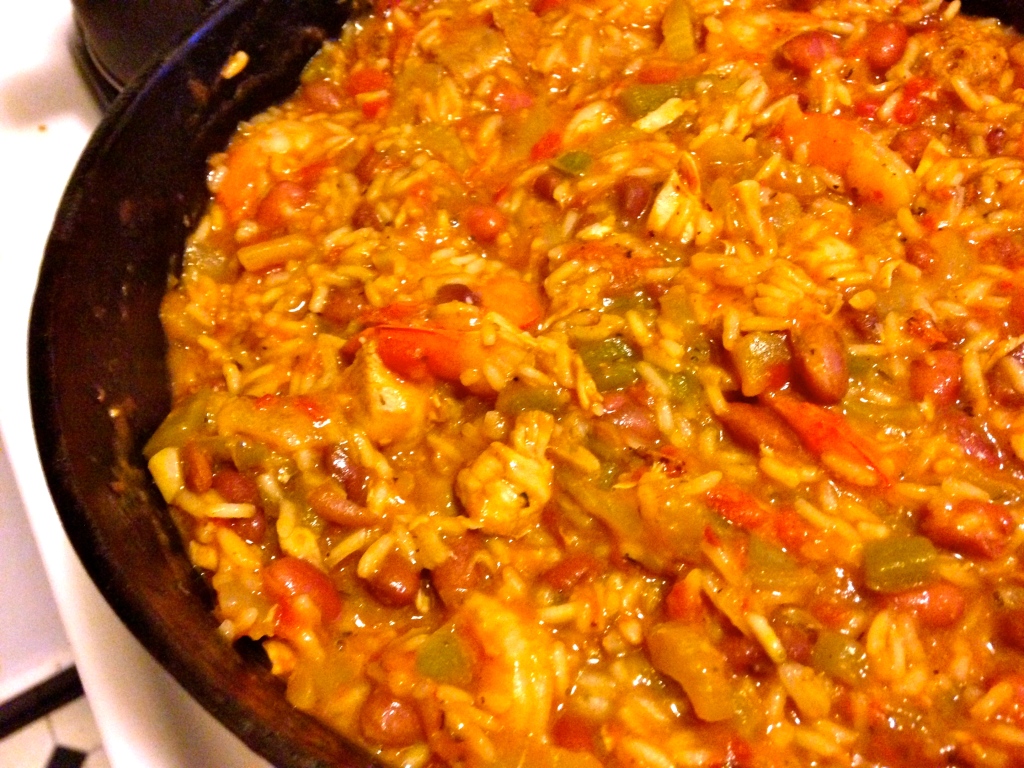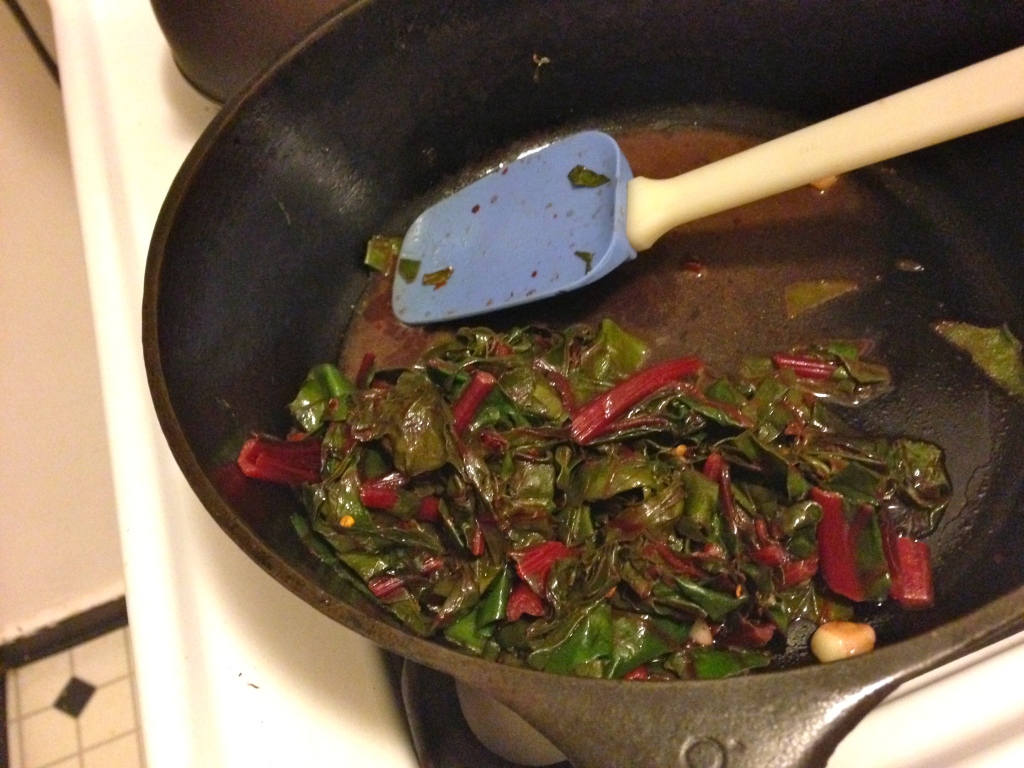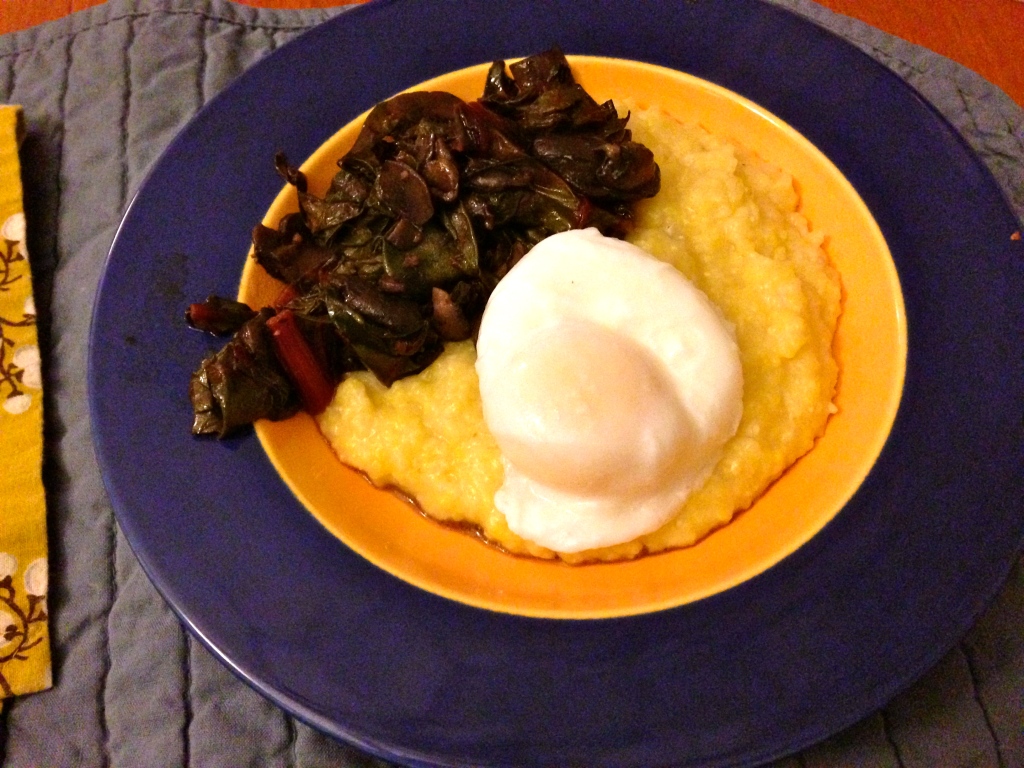Bibimbap 비빔밥 (bibim=mixed bap=rice) has become a very trendy Korean food here in the States and rightly so. It is delicious.
While in Korea, I ate bibimbap on the daily and was happy as a clam.

Interestingly, Koreans are not so impressed by this dish as foreigners are. It´s sort of their leftovers dish where they mix in all the extra banchan (side dishes) with rice and throw an egg on it. My students thought bibimbap was OK but most Koreans think of ¨good¨ food as including grilled meat, like galbi.
Bibimbap is great because it has a lot of room for creativity. You can pretty much add any vegetable topping you want. In the states we have gotten creative and make hippy bibimbap with quinoa, kale, etc.
There are two main types of bibimbap; Dolsot bibimbap 돌솥 비빔밥 and regular bibimbap.
Dolsot bibimbap is made in a hot stone bowl and served with a runny or raw egg which cooks when you mix it in the hot bowl.

Regular bibimbap is served cold is a stainless steel bowl. Sometimes the egg is sunny side up, and sometimes it´s cooked into thin strips. Cold bibimbap sometimes has lettuce, too.
There is also bibimbap made with raw beef and a raw egg yolk called yuk hoe bibimbap 육회비빔밥.
I’ve never tried it and am sad I didn’t get the chance.

Eat Your Kimchi does a great video on fancy bibimbap for can check out: http://www.eatyourkimchi.com/the-best-bibimbap-in-korea/
There other day I made some bibimbap that rivaled the versions I ate in Korea. I thought I would share the magic.
The key to good bibimbap is the gochujang 고추장. Gochujang means red pepper paste but it is also the name for the sauce on bibimbap. Red pepper paste is used in everything in Korea. It´s almost a bigger staple than kimchi (Kimchi has red pepper in it).
I bought some gochujang at Uwajimaya just for the occasion.

Here´s the recipe for the bibimbap sauce:
Bibimbap Sauce
2 Tbsp red pepper paste
1 Tbsp sesame oil
1 Tbsp sugar
1 Tbsp water
1 tsp apple cider vinegar (any vinegar is fine)
1 tsp minced garlic
Bibimbap
Ingredients:
2 carrots
1 zuchinni
4 shitake mushrooms (crimini is okay too)
1 head of spinach (I prefer the head to the pre-packaged)
1 cucumber
garlic
sesame oil
toasted sesame seeds
gochujang
sugar
rice vinegar
2 cups white or long grain brown rice
Apple cider vinegar
Optional:
mirin
kimchi
dried seaweed (gim, nori)
Directions:
Start the rice.
For each ingredient, you must cook it separately. I used my cast iron for this which I think enhances the flavor.
Carrots:
Cut into matchsticks. Stir fry with sesame oil and salt. Sprinkle with toasted sesame seeds. Set aside.
Zucchini:
Cut the zucchini lengthwise and then thinly slice to create half moons. Sauté with sesame oil, a dash of soy, and sprinkle with toasted sesame seeds. Set aside.
Cucumber:
Slice paper thin. Put into a bowl with 2 tablespoons rice vinegar and a pinch of salt and a pinch of sugar. Sprinkle with toasted sesame seeds. Set Aside.
Shitake Mushrooms:
Cut very thin. Cook in sesame oil with a tablespoon of mirin and a dash of soy. Set aside
Spinach:
Wash then leaves and cut off the stems. Cook it a double boiled until it starts to wilt. Squeeze out all the water and smuch it into a ball. Put the ball in a small bowl and drizzle with sesame oil, soy sauce, and sprinkle toasted sesame seed son top. Thinly chop the spinach before serving.
Here´s what my side dishes looked like:
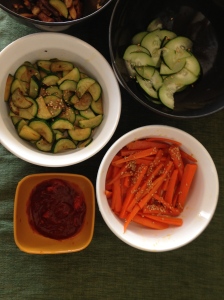

Last step is fun. Scoop up the rice with a cup measure and place in the center of the bowl. Arrange ingredients in the bowl.
Sometimes bibimbap is served with the egg in the middle and the side dishes around it and the rice is served on the side. Othertimes, the rice is already in the bowl underneath. Your call!
Fry an egg sunny side up and place on top.
Top it off with nori strips, gochujang, and kimchi.
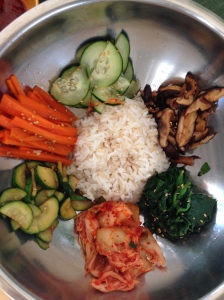



There are many other awesome side dishes I didn´t include in this recipe.
The one above is vegetarian but you can of course make it with ground beef. Below are some additional toppings/side dishes that would be awesome in your bibimbap.
Minced Beef:
Marinate in soy, sesame oil, sugar and minced garlic. Sauté until brown.
Marinated Tofu:
Cut into long cubes. Marinate in soy an sesame oil. Fry in vegetable oil.
Bean Sprouts:
A very traditional bibimbap addition. Boil mung beans for two minutes. Drain and top with sesame oil and scallions.
Boiled gosari*, 고사리 (fernbrake):
This is a side dish common in korea made from ferns, or bracken. You simply boil it or dehydrate it. Read more here.

Most Korean markets should have it.

